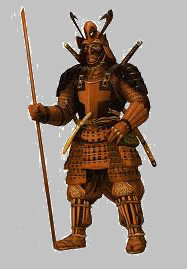What Are The Parts of a Samurai Sword?
I've noticed that there are a ton of different names and variations for the parts of a samurai sword. Two things I can tell you for sure; it depends on the time period in which it was made, and the method used to make the sword.
This is my best explanation of the parts of a Samurai Sword. If you would like to add anything, please do.
1) Kissaki (Point) - This is the fan shaped cutting tip.
2) Yokote (Point Line) - Line differentiating the kissaki from the rest of the blade.
3) Yakiba (Hard Section) - Tempered edge of the blade.
4) Hamon (Temper Line) - Pattern along the cutting edge produced during the hardening process.
5) Ji (Softer Section) - Area between the ha and shinogi.
6) Shinogi (Ridge Line) - Ridge along the side of the blade between the edge and the mune.
7) Shinogi-ji (Flat Section) - Flat surface between the shinogi line and the mune.
8) Mune (Back) - Back edge of the blade.
9) Nagasa (Blade Length) - Measured from the notch at the back of the blade marking the top of the tang to the tip of the kissaki.
10) Nakago (Tang) - The tang is the part of the blade inserted into the handle. Full Tang means this runs through the entire length of the handle.
11) Mei (Signature) - Makers mark; usually an inscription in the tang.
12) Habaki (Ferrule) - Metal collar around the blade just below the guard.
13) Tsuba (Guard) - Guard just above the handle meant to protect the hands.
14) Seppa (Spacers) - Spacers placed both above and below the tsuba.
15) Fuchi (Sleeve) - Metal sleeve and the end of the hilt.
16) Mekugi (Peg) - Peg used to secure the blade in the handle.
17) Menuki (Ornament) - Decorative metal fitting that is placed under the hilt wrappings.
18) Tsuka (Handle) - Where you grip the sword.
19) Kashira (Pommel) - End of the hilt.
20) Kojiri (End Cap) - Metal cap at the end of the scabbard.
21) Saya (Scabbard) - Houses the sword.
22) Sageo (Cord) - Cord used when carrying sword.
23) Kurikata (Knob) - Used in conjunction with sageo for carrying.
24 Koiguchi (Scabbard Mouth) - Opening at the end of the scabbard where the sword is inserted.
Come By and See Our Samurai Swords at allsword.com











